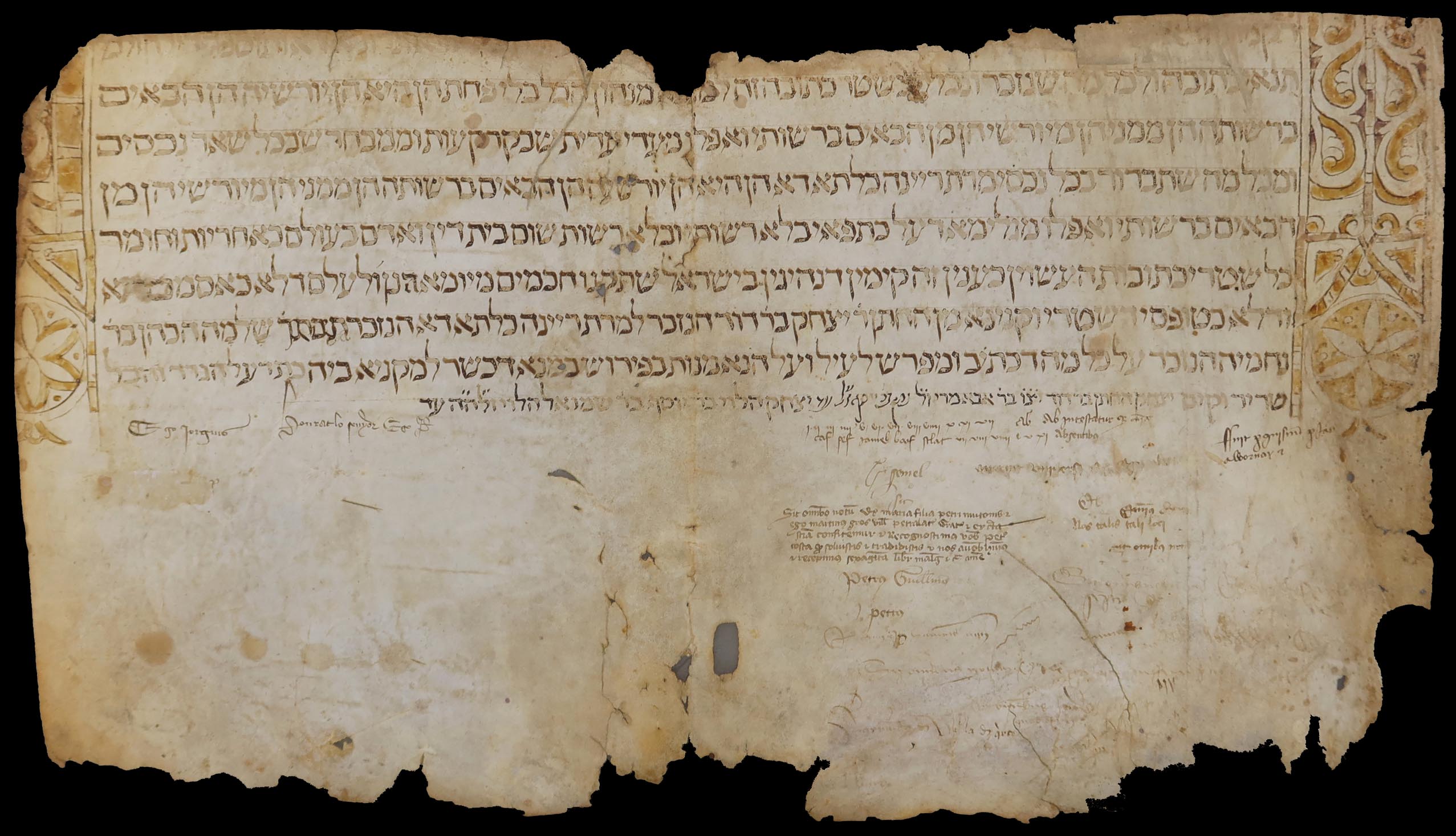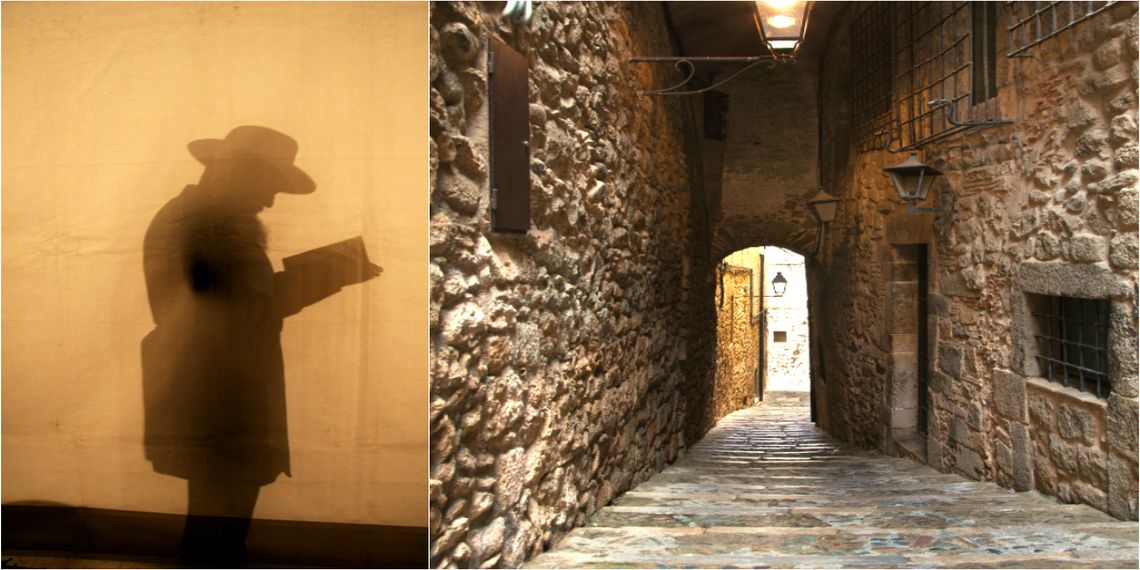Girona, specifically Saint Joseph Square, near the historic center of the city, is where the restoration work takes place. In a pristine white room, Dolores Velasco, dressed in a white gown, latex gloves, and a head cover, meticulously conducts her work.
Morning light streams through the windows, illuminating the space as she attends to her task. With scalpels, tongs, hydrogen peroxide tanks, and syringes laid out on sinks nearby, Velasco meticulously dissects an ancient notary book, a patient in need of restoration. These books, part of the district Historical Archive of Girona, Catalonia, date back to between 1330 and 1492 and are bound by glue made from animal bones.
As Velasco delicately removes the first layer of skin from the book cover, hidden treasures emerge from beneath layers of dirt and old glue. Hebrew script comes into view, revealing mundane yet fascinating details of daily life: ‘stones’, ‘wall’, ‘small beams’… Some Hebrew words bear resemblance to Catalan: ‘guix’ (plaster), ‘Vidal’ (a name), ‘Vidal de Vellcaire’, suggesting the notes of a contractor detailing construction plans, prices of materials, and urgent provisions.
Contrary to expectations of profound theological or philosophical writings, the documents mainly consist of account books, exercises, and shopping lists—a testament to the everyday lives of 14th-century Catalan Jews.
Velasco meticulously continues the restoration process, treating the documents with hydrogen peroxide and carefully separating layers of paper with brushes and chisels. Once dry, she reinforces them with special cellulose before they are archived for further study.
Among the recovered documents are inventory lists of a cloth and textile merchant, detailing sales of mattresses, blankets, and bed covers. Additionally, an inheritance list enumerates books, perfumes, sheets, and blankets, providing insights into material possessions and familial legacies.

The district Historical Archive of Girona houses over 500-year-old documents originating from the Jewish community, concealed within the covers of ancient notary books. Out of tens of thousands of books, approximately 2,000 have been reviewed, revealing more than 180 fragments of Hebrew writings. These findings offer a glimpse into the lives of Spanish Jews before their expulsion in 1492.
Historical notes
The district archive of Girona preserves numerous Hebrew documents from the Jewish community that resided in the city until 1492. Typically, these are fragments of Hebrew writings affixed to notary book covers during the Middle Ages to protect against pests. The expulsion of Jews led to the concealment of this heritage for centuries, until recent discoveries unveiled its significance.
The Girona Historical Archive’s Hebrew manuscripts are available on the Ministry of Culture’s corporate website where the manuscripts can be viewed online in a photo gallery and searched by topic, date, name, and place.
The Jewish History Museum of Girona
Address: Carrer de la Força, 8, 17004 Girona
Phone: +34 972 216 761
Email: re*****************@******na.cat
Website: girona.cat









